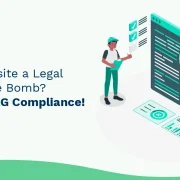
What are the Challenges in Learning and Development?
Irrespective of the type and size of your organization, one thing you cannot afford to de-prioritize is providing your employees with the best possible training opportunities. Although there are various challenges in Learning and Development, a well-structured and properly executed training module not only allows your business to grow but also helps you to remain competitive in the market.
However, because each organization is unique in terms of approach, culture, and other aspects, there is no one-size-fits-all employee training solution out there. There’s a need to create a robust learning and development program that adequately addresses various employee training challenges that your organization and employees face specifically.
This blog explores some of the most common challenges in training and development that training managers face today, what opportunities they present, and some of the effective ways to overcome them.
- Personalization and Adaptive Learning: As the workforce becomes more diverse, it is important to tailor learning and development programs that tackle the learning and development challenges and fulfill the bespoke needs of individual employees. This can be achieved through adaptive learning technologies, which adjust the learning experience based on the employee’s performance and preferences.
- Virtual and Augmented Reality: Virtual and augmented reality technologies are becoming increasingly popular in the workforce learning and development space. They allow employees to experience simulations of real-world scenarios, which can improve their understanding and retention of new skills.
- Gamification: Gamification, or game-like elements in learning and development programs, can make the learning process more engaging and fun. This can increase employee motivation and participation in training programs.
- AI and ML: These technologies can analyze employee performance data and provide personalized feedback and coaching. This helps identify areas where employees need additional training and support and to improve the effectiveness of learning and development programs.
- Mobile Learning: With the widespread use of smartphones and tablets, mobile learning is becoming an increasingly important aspect of workforce learning and development. Employees can access training materials and resources on their mobile devices, making it easier for them to learn new skills and stay up-to-date on industry trends.
Also Read – Top 5 Trends in Workforce Learning and Development
Various Challenges and Opportunities in Employee Training
Some of the key challenges of training employees that organizations face include:
a. Ineffective Training Modules
Ineffective training modules leading to employees being inadequately engaged with your learning platform and content is one of the most common employee training and development challenges. This is primarily because the employees either fail to see the relevance of training or cannot understand its objectives. In other cases, the mode of delivery may also be outdated and uninteresting, making training ineffective for employees.
Opportunities and Solutions
One of the most effective ways to deal with this issue is to create an engaging and dynamic training portfolio that uses various innovative methods such as microlearning or audiovisual elements to deliver the desired learning objectives. You can also make employees a stakeholder in their own learning by using tools such as surveys and appraisals to improve engagement and create engaging custom content to make your employees feel more involved in their own development.
b. Lack of Employee Engagement
The importance of employee engagement in defining the success of any organization is huge. Disengaged employees are less likely to put their hundred percent into their job roles, thus creating an atmosphere of negativity among colleagues as well. This makes it necessary to empower your employees with all the right tools and training to keep them motivated as well as imbue them with the required confidence, so they feel like an important asset to the company.
Opportunities and Solutions
One of the best ways to build employee engagement during training is by enabling them to become self-sufficient without them having to seek help constantly. Further, you can also engage your employees with other innovative methods such as tooltips, in-app walkthroughs, announcements, and more. Make sure to create various personalization opportunities in content or training material to build learner engagement.
c. Digital Transformation
Digital transformation, a steady rise in the adoption of various coming-of-age technologies (AI, ML, etc.,) and a decentralized workforce have given rise to several new challenges of training employees. A geographically dispersed workforce further makes it difficult to conduct training seamlessly due to cultural differences and ongoing misunderstandings.
Opportunities and Solutions
Make sure to clarify the goals of the training from the beginning. Everyone must be on the same page in terms of what is expected of them during training, and how their learnings are going to benefit them in their jobs. Apart from this, you can use various social tools such as webinars, online forums, and video conferences to better manage and unify your dispersed team. The best way to manage this is to take into account your potential learning audience and accordingly develop resources that are both multilingual and multicultural.
d. Change Management
Whenever an organization introduces a new tool, software, or any other training module, employees can respond either by welcoming the change and adapting to it or feeling burdened by it and completely resisting the change. This is one of the biggest challenges that organizations need to tackle effectively and quickly to be able to reap the benefits of the newly invested training module.
Opportunities and Solutions
To be able to deal with this challenge effectively, there needs to be a properly structured change management plan that allows your employees to understand why this change or training module is required and what value it can bring in their day-to-day job roles. Making use of interesting and interactive eLearning solutions is one of the ideal ways to help your employees adapt and get the maximum out of the training. It not only minimizes employee resistance but also ensures the seamless adoption of training modules.
e. Maintaining a Hybrid Work Model
The COVID-19 pandemic has led to most businesses experiencing WFH and the hybrid working model first-hand. Although hybrid working has various proven benefits, the implementation process, especially for employee training, can be quite challenging. If not managed properly in areas such as bridging skill gaps, transparent communication, etc., it could easily impact the overall effectiveness of the training module and minimize the advantages.
Opportunities and Solutions
To navigate this challenge effectively, organizations must consider leveraging the knowledge and expertise of professionally qualified trainers to assist them through this transformation. Moreover, it’s important to implement procedures/processes to ensure that all the training modules conducted in person with employees are also shared with WFH employees to maintain consistency.
f. Evolving Employee Expectations for Training
With diverse workforces these days, employees’ training expectations are also evolving. Creating training programs that are too generic and not personalized enough for specific roles/skills doesn’t work anymore. It can not only strain learners’ time and patience by putting undue pressure on them to engage with irrelevant content but can lead to several further employee training challenges.
Opportunities and Solutions
The best way to deal with this challenge is by categorizing your learning outcomes as either essential or nice-to-have for each role that’s undergoing training. Once done, make only essential training compulsory, use other strategies such as gamification and serious games through points and rewards, and encourage employees to engage with nice-to-have content.
You can also use just-in-time training to update different skills or convey new information when it’s needed most or leverage various relatable case studies and scenarios to reinforce the importance and relevance of the training program to employees’ jobs.
Also Read – Top 5 Reasons to Consider Learning and Development for Your Workforce
Conclusion
Some of the main challenges of training and development of employees that organizations face have been highlighted in this post, along with the solutions and opportunities they offer. The key to achieving your desired employee training goals is to maintain consistency and flexibility as well as demonstrate the ability to consider the overall L&D process holistically along with your employees.

Performance, Results, Growth, and Life-Long Learning define my professional life. I am passionate about making workplace learning planful, purposeful, and impactful. I take pride in partnering with clients and bringing them the best in learning design and creating solutions that address business challenges.




